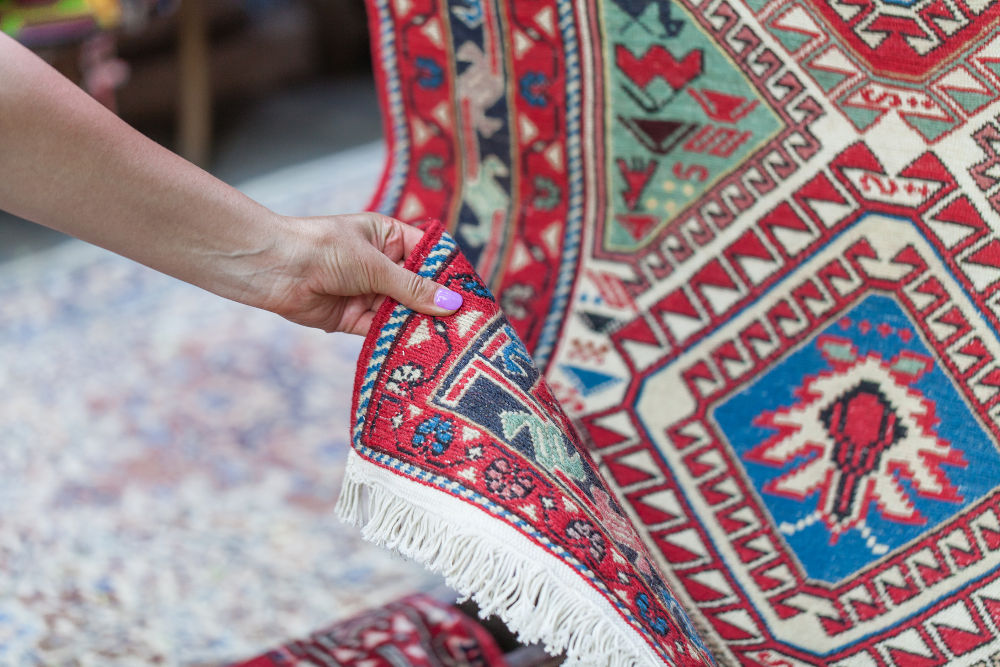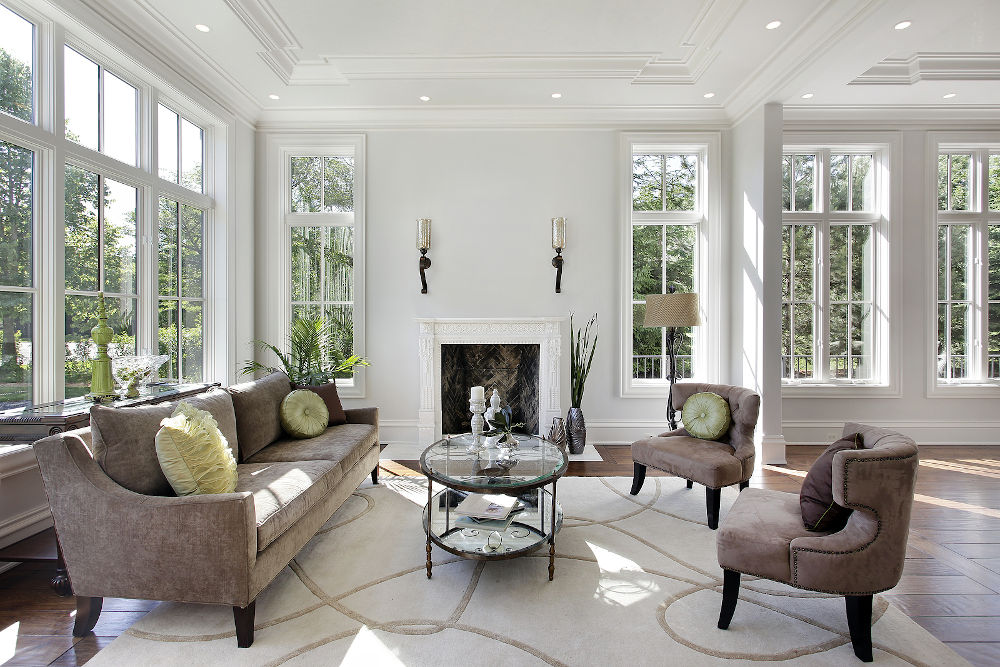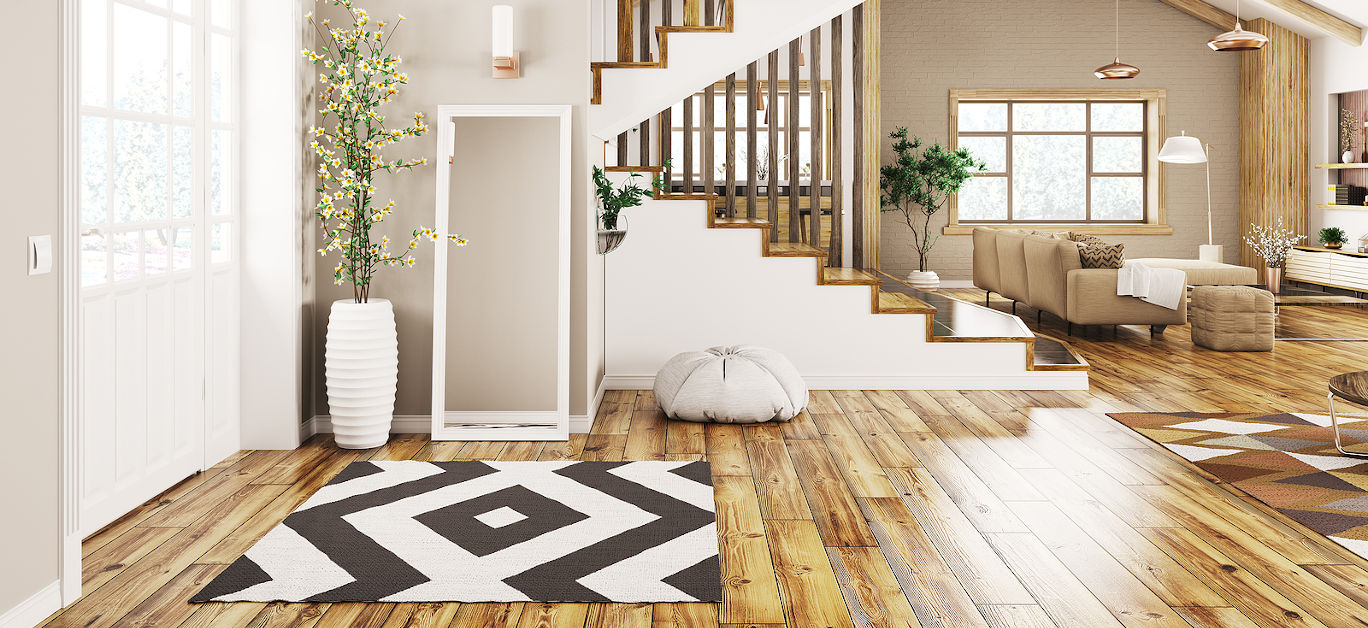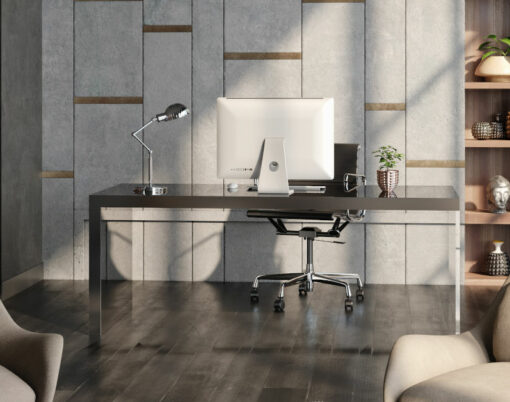Described as practical, functional floor art that helps define a room’s character or vibe, rugs are a great option if you want to freshen up a space but can’t or don’t want to add other permanent artistic design items.
Although you may prefer the pristine look of hardwood and tiles in your house, area rugs can easily be added to areas such as the bedroom or living room to preserve your precious floors while adding a little character, too. There are numerous advantages to having a rug or two in your living space, from increased comfort underfoot to artistic value and also noise reduction. Rugs add pattern, colour, and texture to a room, as well as visual intrigue that reflects your personal taste, and they are a great way of adding style to your décor in an instant.
Where do rugs work best?
Lounging areas like the living room, especially with the help of shaggy rugs, will be instantly warmed and made all the more inviting, providing a cosy feel most notably in the colder months. Rugs are particularly useful in situations where children are frequently playing on the floor such as in a child’s nursery, and they are ideal at absorbing and reducing noises such as the sound and vibrations of walking as well as providing a barrier for when items are dropped on the floor.

Area rugs also help protect against occupants slipping on slick surfaces and avoid damages such as scratches and dents to deluxe floors. A major advantage of rugs is the versatility they offer as they can be moved to different locations around the home, and they are ideal if you want to change your décor periodically and allow it to mix with the changing seasons. With open plan designed homes, area rugs are particularly crucial, because they work well to create definition and boundaries between living and dining areas.
Which materials to look out for
Although synthetics and viscose comprise a large market share, wool is one of the most preferred materials when making rugs. It is the most common for a reason and it is prized for its durability, insulating abilities, softness and cosiness underfoot, its strength and ability to resist water and stains well.
Another luxurious material to look for in a luxury rug is silk. Offering a soft and sumptuous feel, subtle sheen and luxurious and lustrous look, silk rugs are a winner, though they are delicate and so best used in low traffic areas such as the bedroom. Cotton, sisal, jute, seagrass, animal skins and other synthetics are further materials used when crafting rugs and offer their own properties and style for your space.

Texture and style
Just as colour is important in achieving a theme and conveying emotion, the texture of a rug should also be carefully considered. The texture is an object’s visual appearance that conveys a physical attribute; in other words, it appears the way it feels. Different textures can tie in with your colour pick to fully raise a room to a piece of art and can work towards creating a décor that you love, whether you are opting for a contemporary, rustic, art deco, modern, antique or an exotic style. Choosing a style of rug that complements your theme can help simplify the furniture choosing process since many items are meant to complement one other.
Cotton has an airy, fluffy appearance, implying that it would be soft and fragile to touch. Jute and sisal, on the other hand, have a woven, handcrafted texture that suggests a harsher, more durable touch – perfect for high traffic areas.
The texture is primarily determined by two factors: the material used and the manufacturing technique. A vast range of textures can develop depending on the combination. Patterns emerge in the same way, by starting with a foundational shape and then duplicating or slightly altering it throughout the composition. Diamonds, for example, are a common pattern that has been used as a foundation for designs for centuries.
Rugs have evolved into pieces of art in their own right, so if you stumble across one that is simply too beautiful to walk on; consider hanging it on your walls. They’re wonderful for walls that need a little additional aid dampening sound from adjacent rooms, as well as providing an elevated visual aspect.






















